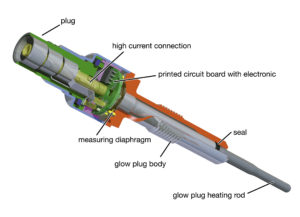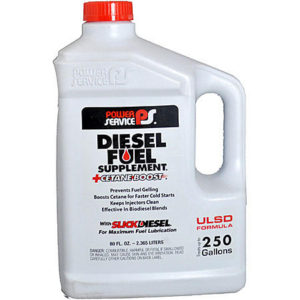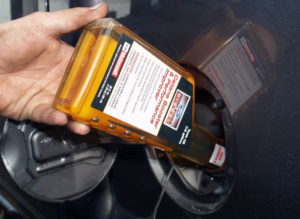12 Tips For Starting Diesel Engines In The Cold
 "Okay, campers, rise and shine, and don't forget your booties 'cause it's cooooold out there today.... It's coooold out there every day. What is this, Miami Beach?" (Groundhog Day)
"Okay, campers, rise and shine, and don't forget your booties 'cause it's cooooold out there today.... It's coooold out there every day. What is this, Miami Beach?" (Groundhog Day)
That's right folks winter is upon us once again here in the Rocky Mountains of Colorado. With a so called "polar vortex" on its way tomorrow, we here at Capital Reman thought it would be fitting to show a little video of some of the best "cold diesel starts" from last month in addition to offering some tips on how to start a diesel engine on a cold day. Take a look at some of the tips below. Bill Murray Faces Winter Head On In The Classic Movie: Groundhog Day
Bill Murray Faces Winter Head On In The Classic Movie: Groundhog Day
A Few Tips On Starting a Diesel Engine On a Cold Morning:
1. Glow Plugs and Block Heaters: The use of glow plugs or block heaters will start the vast majority of diesel engines on a cold day. Glow plugs work by heating the internal combustion chamber so that conditions are suitable for compression and ultimately ignition.
2. Wait on the Glow Plugs: If the combustion chamber isn't heated properly with the glow plugs cold fuel sprayed on the semi-heated plugs will cause the diesel fuel to gel up and stick to the cylinder heads. This may cause damage to the wall of the heads or the surface.
3. Install a Second Battery: Make sure you have a fully charged battery or a secondary battery installed just for the glow plugs. Glow plugs do not work without some serious juice from your vehicle's battery. When the temperature goes down so does a battery's capacity to hold a charge. A battery will have 100% power at 75-80 F but only 46% available power at 0 degrees F. Having that second battery installed just may be the difference between the motor cranking over or not.
4. Change the Oil Regularly: An engine is roughly 2-3 times harder to start at 0 degrees F due to thicker oil lubricating the hard internal parts of the engine. The thicker the oil the more resistance on the bearings and moving parts. Most individuals don't realize that the crankshaft doesn't "sit" on the bearings but rather the oil pressure lifts up the crankshaft and it essentially floats on top of the bearings in a cavern of oil. Having enough oil that is fresh and of a high chemical grade will help keep the internal diesel engine parts lubricated properly and in alignment. Diesel Engine Glow Plug
Diesel Engine Glow Plug
Both synthetic and natural mineral oils are fine for diesel engines. Oil "goes bad" essentially from capturing, in the suspension, the chemical bi-products such as silicon oxide and various acids from the combustion cycle. It also loses viscosity through the transfer of tremendous heat away from the combustion cycle and through minimizing the exposure of oxidation at higher temperatures. Heat, pressure and chemical reactions all destabilize diesel engine oil. Internal Workings of a Glow Plug
Internal Workings of a Glow Plug
When oil oxidizes fully the additives separate and begin to break down chemically leading to black engine sludge. Engine sludge will eventually destroy and a diesel engine if not unclogged and cleaned. Therefore it is very important to change the oil regularly especially more so in colder climates.
5. Turn Off All Non-Essential Accessories: Remember you only have so much battery power available on a frigid winter's day. Limit the use of headlights, radios, iPods, phone chargers, heaters and air conditioners while starting the engine. If you can do not use these devices while the motor is running. These devices pull much needed amps away from the glow plugs. 6. Use the Correct Diesel Fuel: Diesel Fuel comes in two different grades: Diesel #1D or Diesel #2D. Diesel #2 is the most widely used diesel fuel available on the market. If you go to any gas station most likely they carry Diesel #2D as the primary fuel of choice. Diesel #2 is specified, by all of the major auto manufactures, as the standard fuel recommendation for normal driving conditions. Diesel #2 is less volatile than Diesel #1. The higher the cetane number means the more volatile the fuel mixture. Most manufacturers recommend a 40-45 cetane fuel rating for light duty diesel engines. Heavy Haul truck drivers tend to use Diesel #2 for long-distances due to greater fuel economy. The more stability during combustion equals better, more consistent, fuel mileage.
6. Use the Correct Diesel Fuel: Diesel Fuel comes in two different grades: Diesel #1D or Diesel #2D. Diesel #2 is the most widely used diesel fuel available on the market. If you go to any gas station most likely they carry Diesel #2D as the primary fuel of choice. Diesel #2 is specified, by all of the major auto manufactures, as the standard fuel recommendation for normal driving conditions. Diesel #2 is less volatile than Diesel #1. The higher the cetane number means the more volatile the fuel mixture. Most manufacturers recommend a 40-45 cetane fuel rating for light duty diesel engines. Heavy Haul truck drivers tend to use Diesel #2 for long-distances due to greater fuel economy. The more stability during combustion equals better, more consistent, fuel mileage.
However, the use of Diesel #1D is recommended in cold weather climates. Diesel fuel is also measured by its viscosity rating. Diesel #1D is thinner and thus flows more easily within the engine. Diesel #1D is also less likely to become thicker or become sludge-like during freezing temperatures. The greater chemical volatility, which is normally a deterrent, is an asset in cold weather simply because it ignites much easier during compression. Although, Diesel #2D is the most popular diesel fuel selection at gas stations many stations will offer a blended Diesel #1 and Diesel #2 option during the winter months. 7. Include Winter Fuel Additives: Most gas and service stations will sell winter blend diesel fuel additives that can be added to your diesel fuel. Additives work by lowering the Cold Filter Plugging Point (CFPP) which is a standardize test to determine the rate at which diesel fuel will flow through a filtration device under cooler conditions. There is also a Low Temperature Flow Test (LTFT) which rates the performance of diesel engines with zero or improper additives in regards to the fuel lines. It is good to note that the third and final test for determining how effective diesel fuel is at operating under cold conditions is the called the Pour Point. The Pour Point is this final temperature at which diesel fuel loses its liquid character and pumps would stop operating altogether.
7. Include Winter Fuel Additives: Most gas and service stations will sell winter blend diesel fuel additives that can be added to your diesel fuel. Additives work by lowering the Cold Filter Plugging Point (CFPP) which is a standardize test to determine the rate at which diesel fuel will flow through a filtration device under cooler conditions. There is also a Low Temperature Flow Test (LTFT) which rates the performance of diesel engines with zero or improper additives in regards to the fuel lines. It is good to note that the third and final test for determining how effective diesel fuel is at operating under cold conditions is the called the Pour Point. The Pour Point is this final temperature at which diesel fuel loses its liquid character and pumps would stop operating altogether.
Once a diesel engine has been started in a cold temperature environment it may continue to operate below its Cold Filter Plugging Point (CFPP) for a period of time. Usually once this temperature is reached fuel from the injector pump and injectors will cease to flow and the spill over is returned to the fuel tank. The Cold Filter Plugging Point Additives prevents fuel from freezing in the lines and gelling in the engine as well as the gas tank. Once the temperature has warmed up again fuel will then be released to the injectors. 8. Mix Additives During Fueling: Note that these additives will only be effective when added above the Cold Filter Plugging Point (CFFP). The additives need time to mix with the fuel at warmer temperatures. Ideally, one should include the additives directly after filling with Diesel #1D at a service station on a cold day. The warm diesel fuel directly from the pump should be warm enough to allow the two solutions to mix properly. If you plan to be driving long distances in the cold choose an additive that is rated at least 10 degrees colder than the temperature you expect to incur.
8. Mix Additives During Fueling: Note that these additives will only be effective when added above the Cold Filter Plugging Point (CFFP). The additives need time to mix with the fuel at warmer temperatures. Ideally, one should include the additives directly after filling with Diesel #1D at a service station on a cold day. The warm diesel fuel directly from the pump should be warm enough to allow the two solutions to mix properly. If you plan to be driving long distances in the cold choose an additive that is rated at least 10 degrees colder than the temperature you expect to incur.
9. Do Not Mix Additives With Winterized Diesel Fuel: Diesel additives are not an end all be all solution to cold winter weather issues. The additives will only prevent large particles of gel from forming in the engine that can clog up the fuel filter. Some gelling will occur regardless of the temperature or types of additives used. If a gas station offers a winterized diesel fuel (not to be compared with blended diesel fuels) you should not add any additional additives to the fuel. The incompatibilities with multiple types of additives may deteriorate the fluids in the fuel blend and completely reverse any benefits whatsoever. 10. Change the Fuel Filter If You Suspect the Fuel Has Gelled: If you suspect your diesel fuel has gelled wait for the temperature to rise or use a block heater to warm up the engine before attempting to start. Change the fuel filter immediately as gel in the fuel filter can block the flow of fuel from the tank to the injector pump on older vehicles. Common rail injectors are less prone to gelling because they are governed by the ECM.
10. Change the Fuel Filter If You Suspect the Fuel Has Gelled: If you suspect your diesel fuel has gelled wait for the temperature to rise or use a block heater to warm up the engine before attempting to start. Change the fuel filter immediately as gel in the fuel filter can block the flow of fuel from the tank to the injector pump on older vehicles. Common rail injectors are less prone to gelling because they are governed by the ECM.
11. Store Your Equipment or Diesel Vehicle in a Heated Location: This may seem like a no brainier but even a few degrees warmer can be the difference between a truck that will start and and one that won't. If possible store trucks and tractors in garages, barns or sheds on cold days. To save some time consider using a block heater on a timer a few hours before usage. It may not be an immediate solution but it is helpful to help getting the engine started.
12. Let Engine Warm up Before Putting It Under Load: It is advisable to give the engine 5-10 minutes to achieve proper operating temperature. The colder the engine the more stress there is on hard internal parts (camshaft, crankshaft, connecting rods etc...) With just a few minutes of warmth the oil temperature will reach optimal levels and lubricate the engine properly.
Best Cold Diesel Starts November 2016 - Video Courtesy of ClutchUpProductions




